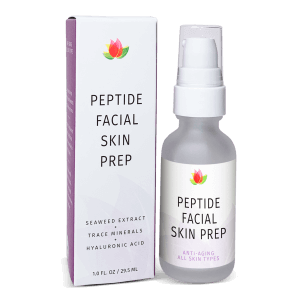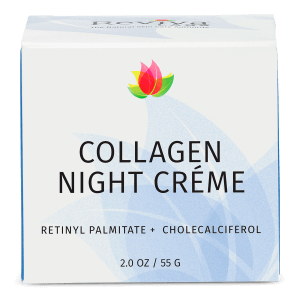Natural, Reviva Labs, Skin Care
Understanding Allergic Skin Reactions: Causes, Symptoms, and Treatment
Skin is the body’s largest organ and acts as a protective barrier against external substances. However, sometimes the skin can react negatively to certain triggers, resulting in allergic skin reactions. These reactions can manifest in various ways, from rashes and itching to swelling and blistering. In this post, we’ll explore the causes, symptoms, and treatment options for allergic skin reactions.
What are Allergic Skin Reactions?
Allergic skin reactions occur when the immune system overreacts to certain substances that it perceives as harmful. These substances, called allergens, can vary widely and may include chemicals, metals, fragrances, and even certain medications. It’s important to note that allergic skin reactions are different from irritant reactions, which are non-immune responses to substances that directly damage the skin.
Causes of Allergic Skin Reactions
- Chemical Fillers: Chemical fillers found in many skincare products are one of the most common triggers for allergic skin reactions. A study conducted in 2010 revealed that over 300 out of 900 participants experienced an allergic reaction to chemical fillers in skincare products.
- Preservatives: Certain preservatives, such as phenoxyethanol, formaldehyde, and parabens, can also act as allergens and trigger allergic skin reactions.
- Synthetic Fragrances: Synthetic fragrances, commonly found in cosmetics and scented products, can be highly aggravating to the skin, especially when combined with intense skincare treatments or high-powered energy modalities.
- Metals: Metals like nickel and cobalt are known allergens that can cause allergic skin reactions, particularly in individuals with sensitivities.
- Latex Rubber: Latex rubber can also trigger allergic skin reactions, making it important to be mindful of its presence in certain products.
Symptoms of Allergic Skin Reactions
The symptoms of allergic skin reactions can vary from person to person, but common signs include:
- Redness and inflammation
- Itching and discomfort
- Swelling and blistering
- Dry and flaky skin
- Rash with or without clearly defined edges
Diagnosing Allergic Skin Reactions
Diagnosing allergic skin reactions requires a comprehensive assessment of the individual’s symptoms and medical history. A healthcare professional will typically inquire about recent exposures to potential allergens and perform tests, such as patch testing, to identify the specific triggers.
Patch Testing
Patch testing involves applying small amounts of suspected allergens to the skin using adhesive patches. These patches are left in place for a specific period, usually 48 to 72 hours, to observe any allergic reactions. If a rash or irritation develops at the site of a particular allergen, it indicates a positive reaction and helps identify the trigger.
Treatment Options for Allergic Skin Reactions
Managing allergic skin reactions involves a combination of avoiding triggers and utilizing appropriate treatment options. Here are some strategies commonly employed:
Trigger Avoidance
The primary approach to managing allergic skin reactions is to avoid exposure to the triggers whenever possible. This may involve:
- Reading product labels and avoiding known allergens
- Opting for products with hypoallergenic formulations
- Using alternative materials, such as nickel-free jewelry, to minimize metal allergies
- Implementing protective measures, like gloves or clothing, in high-risk environments
Topical Treatments
Topical treatments play a crucial role in alleviating the symptoms of allergic skin reactions. These may include:
- Steroid creams or ointments: These anti-inflammatory medications help reduce redness, itching, and swelling.
- Emollients and moisturizers: Regular use of these products helps restore the skin’s moisture barrier and soothe dryness.
- Calamine lotion: Calamine lotion can provide relief from itching and soothe irritated skin.
Medications
In some cases, oral antihistamines or corticosteroids may be prescribed to manage severe allergic reactions and provide symptomatic relief.
Professional Interventions
For individuals with chronic or severe allergic skin reactions, seeking professional help from dermatologists or allergists may be necessary. These specialists can provide personalized treatment plans, including immunotherapy or desensitization techniques.
Preventing Allergic Skin Reactions
Prevention plays a crucial role in managing allergic skin reactions. Here are some preventive measures individuals can take:
Read Product Labels
Carefully reading product labels and ingredient lists can help identify potential allergens and avoid products that may trigger allergic reactions.
Perform Patch Tests
Before using a new skincare product or cosmetic, perform a patch test on a small area of skin to check for any adverse reactions.
Use Hypoallergenic Products
Choosing hypoallergenic products can minimize the risk of triggering allergic skin reactions. These products are formulated to reduce the likelihood of causing irritation or allergies.
Protect Your Skin
When engaging in activities that may expose your skin to potential allergens, such as gardening or handling chemicals, wearing protective clothing, gloves, and masks can help minimize contact and reduce the risk of allergic reactions.
Conclusion
Allergic skin reactions can be distressing and uncomfortable, but with proper understanding and management, individuals can effectively minimize their impact. By identifying triggers, avoiding allergens, and utilizing appropriate treatments, individuals can reduce the frequency and severity of allergic skin reactions. If symptoms persist or worsen, it is crucial to seek medical advice for a comprehensive evaluation and personalized treatment plan. Remember, prevention is key, and being proactive in identifying and avoiding triggers can significantly improve skin health and overall well-being.
Disclaimer: This article is for informational purposes only and does not constitute medical advice. Consult with a healthcare professional for personalized recommendations and treatment options.












